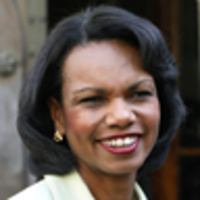
I was a tomboy as a child and a jock as a teenager. But that was years before Title IX spawned organized women’s teams and college scholarships.
This might explain why my sport of choice was figure skating (despite my 5’8” frame and 5’10” legs). Dressed in pretty sequined costumes and make-up, I twirled and jumped my way to a decidedly mediocre competitive career. Well, it was actually worse than that—my best finish was third in one competition.
If only someone had put a basketball in my hand when I was an already lanky 5’5” 10-year-old.
Oh, if only someone had put a basketball in my hand when I was an already lanky 5’5” 10-year-old. Well, the truth is that someone did—when I was about 6. But in those days, the rules were strange for women. There were six players, only three of whom could cross half-court. Since I was big, I was relegated to standing behind the line and playing defense. It was really boring!
That is why I’ll be cheering on May 15 when the WNBA season tips off. Several years ago, when I was secretary of State, I spoke to the League’s Women’s Achievement Luncheon. I told the athletes how much I envied them, playing a sport in which you can actually sweat and grimace when something goes wrong. In skating, even after the most humiliating and painful falls you were expected to get up and smile. This despite the fact that your dress was plastered to your body—courtesy of the water puddle on the ice that skaters always seemed to find when they hit the ice.
In women’s basketball, you can look like what you do is hard and takes great athleticism. And I love the fact that these women work as a team—learning that you are only as good as the person next to you in the trenches. Great friendships come from pursuing a common and very measurable goal. These athletes learn too how to recover from bad performances and get up the next day, work hard and do it all over again. Sort of like life.
Teaching at Stanford, I have seen how intercollegiate athletics promotes the development of focused, confident, young women. It isn’t easy to balance academics and athletics, and I’ve had both male and female athletes do it well. But nationally, women’s athletics has had fewer problems with academic standards than big-time men’s programs. Some say this is because women are not subject to the siren call of professional athletics. For too many male athletes, college is just a pit stop on the road to the NFL or the NBA.
Probably true. But I want to see women put their talents to work at the next level. I want them to be able to make a living at what they do best and still long to do when college is done. That is why I want the WNBA to succeed—along with the LPGA. I also hope women’s soccer will return and that one day women’s professional softball will be born.
To be sure, the product has to be good enough to sustain a fan base. I admit to a bit of discomfort watching the championship game between my beloved Stanford Cardinal (not the Lady Cardinal, just the Cardinal) and the Connecticut Huskies last April in San Antonio. Even though we led at the half, my heart fell with each missed layup on both ends of the floor. I said to my friend Lori White, who’s also a fan of women’s basketball, “Do you think the audience is tuning out?” We decided that it was really great defense that caused the score to be 12-5 deep into the first half.
So women’s basketball and the WNBA have work to do even with devotees of the game. Owners like my friend Sheila Johnson, of the Washington Mystics, know that the game has a long way to go and are tireless in trying to improve it. Yet, there is a lot to work with.
After all, the second half of the NCAA final in San Antonio was terrific. Maya Moore and Tina Charles started hitting their shots and the place went crazy. Stanford made a furious run but Connecticut held us off. These women could really play. I watched Jayne Appel, our 6’5” center, wince in agony from the hairline fracture in her ankle that had hobbled her for much of the season. But I knew that for this very tough athlete and team leader, the end of Stanford’s title hopes—her last chance to be a national champion—hurt even more. And then there was Tina Charles, basking in the glow of another undefeated championship season. But it had to be bittersweet, since her incredible run as a college superstar was over.
I thought to myself, “It’s not the last time Jayne Appel and Tina Charles will meet.” They’ll see each other again in the WNBA. That’s the way it should be. And I’ll be watching.
Condoleezza Rice is the Thomas and Barbara Stephenson Senior Fellow on Public Policy at the Hoover Institution and professor of political science at Stanford University. From January 2005 to 2009, she served as the 66th secretary of State of the United States. Before that, she served as assistant to the president for national-security affairs from January 2001 to 2005.






